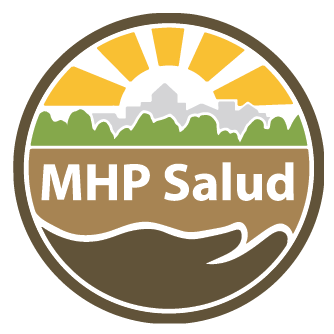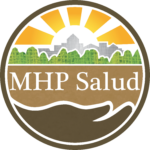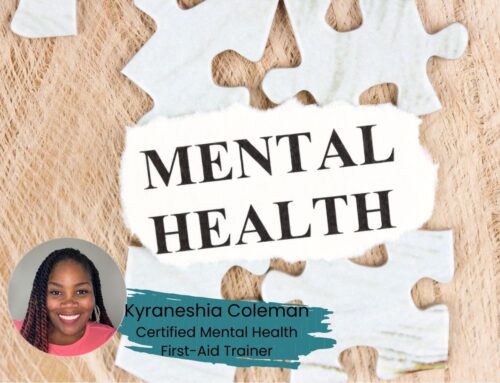MHP Salud Releases Seven Steps to Increase Effective Outreach and Enrollment in Immigrant Populations
With the help of The Strengthening Outreach and Enrollment of Immigrant Populations Special Opportunity Grant, sponsored by Community Catalyst, MHP Salud spearheaded an initiative between July and October 2014 to conduct a community assessment and develop a plan to enhance outreach and enrollment in immigrant communities during the Second Open Enrollment Period in Texas’ Rio Grande Valley (RGV).
Below is a strategic plan that was developed based on the results from focus groups and a survey conducted with community members and individuals from organizations that work with health insurance enrollment and outreach. The recommendations were also informed by MHP Salud’s detailed knowledge of the RGV. The following seven steps are recommended to increase effective outreach and enrollment in immigrant populations:
1. Increase efforts to improve health insurance literacy
Community coalition members emphasized a general lack of knowledge in the community in regards to basic health insurance concepts such as premium, deductible, and copay. This was a common barrier for MHP Salud’s Health Care Navigators who reported that enrolling new members in insurance plans was very time consuming. Navigators had to spend exorbitant amounts of time explaining insurance concepts, often spending up to three hours per consumer. With this insight, it is recommended that future efforts emphasize education in regards to health insurance. These efforts should include, but not be limited to: creation and dissemination of culturally and linguistically appropriate insurance education tools (e.g. brochures, posters, information available on social media, etc.); insurance education events for the public (e.g. talks held in community spaces such as churches); and allotment of extra time to educate on insurance during Open Enrollment events.
2. Execute a multi-faceted community outreach strategy
Members of a community coalition discussed their satisfaction in the multiple mediums utilized to reach the immigrant community. Mediums included local television and Spanish radio stations. However, members expressed the need for a much larger media presence in order to reach more people. Multiple respondents of the survey indicated the need for more door-to-door outreach and the utilization of Promotoras and Certified Application Counselors (CACs). This request was echoed in the focus groups, in which the need for in-person assistance was emphasized. Given various characteristics of the community (e.g. Spanish speaking, large prevalence of government distrust, lack of experience with the US health care system), in-person outreach from trustworthy, knowledgeable sources (e.g. Promotoras) is merited. Survey respondents advocated a diverse set of desired outreach strategies (e.g. outreach at schools, churches, and community centers). It is recommended that multiple outreach strategies be utilized, but that an increased media presence in concert with in-face outreach and enrollment events be emphasized. Furthermore, medical providers should also be targeted by outreach. For example, educational materials on health insurance and the enrollment process (e.g. such as those outlined below) could be distributed at physician’s offices to be available in waiting rooms. Lastly, many voiced the desire for informal informational settings with small groups (N~15) to discuss health insurance and the Affordable Care Act (ACA), and how it specifically relates to the immigrant community. A Question-and-Answer session would allow community members to speak openly about any doubts or apprehensions they feel in regards to the enrollment process. It is important that such sessions be held in community spaces where individuals would be comfortable asking questions. Such sessions would also be favorable mediums to distribute educational materials (such as those described below).
3. Develop a “Myth Busting” campaign to dispel misconceptions and reduce fear
Survey respondents and focus group participants indicated that mistrust of the government and fear of negative consequences from disclosing private information (e.g. residence, immigrant status, income) pose substantial barriers to the immigrant community. Such fears are especially salient in this region given the large number of mixed-status households. Therefore, efforts designed specifically to dispel fears and debunk myths should be emphasized. For example, messages ensuring the safety for non-applicants and highlighting the privacy protection outlined in the ACA need to be clearly communicated. Brochures outlining the myths and providing correct information is one possible tactic. Large numbers of these educational materials should be created, as individuals from community organizations voiced challenges in obtaining a sufficient quantity of health insurance materials, especially those in Spanish, during the first Open Enrollment Period. Additionally, personnel involved in outreach and enrollment needs to be aware of the myths and have the proper responses for the consumers. Materials created specifically for outreach workers (e.g. Promotoras) would be beneficial.
4. Develop a “Benefits of Health Insurance” campaign
Some immigrant residents in the region still receive healthcare in Mexico and therefore may not recognize the benefit of enrolling in a US-based health insurance plan. Others may not see the benefits for various other reasons. It is important to acknowledge the political rhetoric around the ACA (i.e. “Obamacare”), and that there are a number of mixed messages in regards to healthcare reform. Given all these factors, it is recommended that future efforts highlight the benefits of having health insurance. Such benefits could be included in the insurance education materials highlighted in strategy (1), be communicated during the community outreach activities outlined in strategy (2), and/or listed in the materials designed to debunk health insurance myths as outlined in strategy (3) (i.e. debunking the myth that health insurance is not useful). Financial penalties for not having health insurance could be emphasized here as well. Furthermore, efforts should emphasize the “No Wrong Door” policy established by the ACA in which an application for health insurance through the marketplace could also be used to initiate the application process for other social assistance programs such as CHIP and Medicaid. For example, an eligibility application filed during enrollment will be sent to the state Medicaid program for final eligibility determination and enrollment through the Texas Health and Human Services Commission. Essential to this strategy is to always encourage people to apply, even if they think they might fall in the coverage gap. Community members should be affirmed that there are no negative consequences from applying for health insurance. At the very least, they would have documentation of their attempt to enroll shall they be contacted by the IRS.
5. Directly target both those who successfully enrolled in a plan during the first Open Enrollment Period, in addition to those who applied but were unsuccessful
Individuals who successfully enrolled during the first Open Enrollment Period should be encouraged to return and speak with either a Navigator or a CAC in case their situation changed (e.g. income or number of co-residents in house). This will preempt future complications shouldtheir health plan not reflect their current situation. Additionally, due to glitches in the system (e.g. the system failing to recognize special cases), many individuals who attempted enrolling during the first Open Enrollment Period received false eligibility results and will likely think such results would happen again during the second Open Enrollment Period. Efforts should emphasize that these individuals should still apply during the second Open Enrollment Period.
6. Develop strategies for unique sub-populations
While the majority of immigrants in the region originate from Mexico and Central America, there are also immigrants from other regions such as the Philippines and the Middle East. Tailoring (and/or translating) some of the educational materials to these groups would be one way to target these subpopulations. A national call center (1-800-318-2596) has been established to assist with enrollment, and can connect to language lines for immediate interpretation. Furthermore, individuals granted Refugee status are eligible for health insurance under the ACA and should be targeted in outreach efforts. Organizations enrolling individuals in health insurance and those working with refugees should collaborate to coordinate services. This process should be initiated by first identifying organizations working with refugees to add to the list of community organizations compiled by MHP Salud. Then, steps to foster a collaborative relationship between these organizations should be taken.
7. Conduct focus groups with organizations that specifically work with immigrant populations
Only 25% of the survey respondents reported that services to immigrant populations is a special focus of their organization. This represents a service gap given the large number of immigrants in the region. Focus groups or key informant interviews with organizations that specialize in immigrant population services will elicit helpful information for organizations wanting to improve and/or expand their services to the immigrant community.
Conclusion
It is imperative that all of these recommendations be implemented in a culturally and linguistically appropriate manner. Message sources should be individuals they resonate with, such as other immigrants who have successfully registered for health insurance. Promatoras and other individuals with intimate knowledge of the cultural and societal dynamics of the RGV should be at the frontline of all outreach efforts. If taken together, these seven recommendations are likely to improve future outreach and enrollment efforts with immigrants living in Texas’ Rio Grande Valley.
About MHP Salud
MHP Salud has over thirty years of experience implementing CHW programs and training organizations looking to start and/or strengthen their own CHW programs. For more information about MHP Salud, our services, and how we can help you, please email us at info@mhpsalud.org








